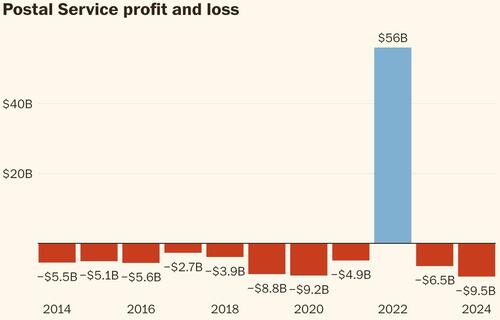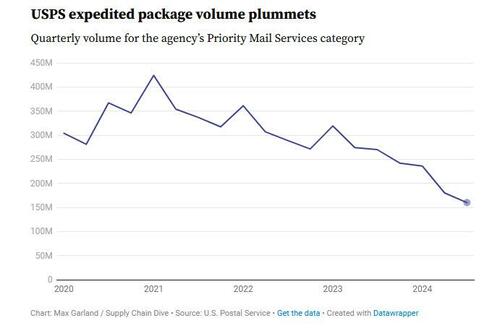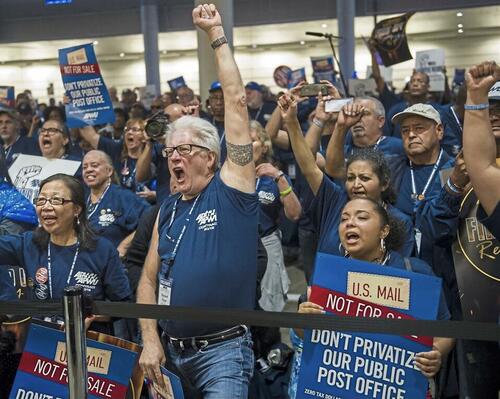
Donald Trump is fired up about finally giving the money-losing US Postal Service its long-overdue shove into the private sector, according to three sources who talked to the Washington Post.
Trump is said to have discussed the idea with Howard Lutnick, who’s co-chairing his transition team and who’s been tapped to serve as Commerce secretary in the new administration. He also held a meeting with various transition officials to exchange thoughts on privatization of the huge organization. Separately, the Department of Government Efficiency, led by Elon Musk and Vivek Ramaswamy, has held its own discussions about drastic action.

Last month, USPS disclosed that it posted a net loss of $9.5 billion for the 2024 fiscal year — a loss that was 46% worse than the service’s $6.5 billion deficit in 2023. The plunge came alongside a slight uptick in revenue enabled by the latest annual increase in postage rates, pursuant to the 2021 Delivering for America plan. That program was supposed to help the perennially-profitless behemoth “achieve financial sustainability and service excellence.” The service also has a crummy balance sheet, with nearly $80 billion in liabilities.

After reviewing the numbers, Trump stated his opinion that the Postal Service shouldn’t be subsidized by the government, the Post’s sources said. Casey Mulligan, a University of Chicago economics professor who served on Trump’s Council of Economic Advisers, tells the Post it’s time for a major change:
“The government is slow, slow, slow — decades slow on adopting new ways of doing things, and there’s a lot of [other] carrier services that became legal in the ’70s that are doing things so much better with increased volumes and reduced costs. We didn’t finish the job in the first term, but we should finish it now.”

The Postal Service is politically powerful — starting with its raw headcount: While you may not guess it given the long lines that typify a visit to a post office, USPS has a staggering 650,000 employees, who become very active whenever privatization gains momentum. It’s also popular among Americans — 72% view it favorably, compared just 21% who view it unfavorably, according to a 2024 Pew Research poll.
Meanwhile, though a belief in small government is supposedly a GOP cornerstone, the postal service is particularly valued by people living in rural, Republican districts. Earlier this month, Missouri Republican Sen. Josh Hawley angrily confronted Postmaster General Louis DeJoy over a plan to save costs by slowing delivery for some mail, something that would affect rural areas more than urban ones. “I hate this plan and I’m going to do everything I can to kill it,” said Hawley in a Senate hearing.

In addition to having GOP control of the Senate and the House in the next legislature, Trump is positioned to fill three vacancies on the Postal Service’s 11-member board. (Biden has submitted nominees, but you can expect the Senate to ignore them through Jan 20.) Of the incumbents, three are Republicans, with two of them appointed by Trump in his first term.
Even if privatization doesn’t happen, Trump’s mere threat of pursuing it could help drive changes to the organization. As the Lexington Institute‘s Paul Steilder tells the Post…
“At the end of the day, the Postal Service is going to need money, it’s going to need assistance, or it’s going to have to come up with some radical, draconian measures to break even in the near term. That gives both the White House and Congress an awful lot of power and an awful lot of leeway here.”
Sound good on paper…but, as evidenced by the “profit”-and-loss chart above, Congress has long shown a lack of urgency about seeing the USPS “break even in the near term.” Even with a president who’s fired about it — for now — we’re not convinced it will be any different this time.
Tyler Durden
Sun, 12/15/2024 – 20:25